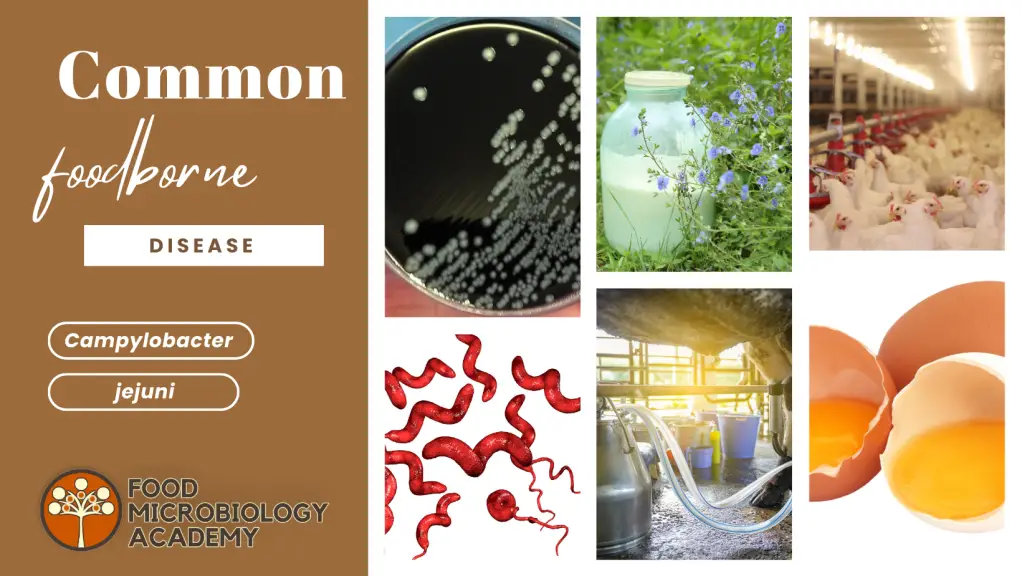HISTORY AND BACKGROUND
Campylobacter jejuni was discovered in 1886 by a Belgian veterinarian named Theobald Smith, who identified it in the intestinal tract of a pig. However, the bacterium was not officially named until 1972, when it was isolated from human feacal samples by researchers in England and named Campylobacter jejuni by Dr. P.A. Skirrow.
Throughout the 1970s and 1980s, Campylobacter jejuni was recognized as a significant cause of gastroenteritis in humans, particularly in developed countries. Advances in laboratory techniques allowed for more accurate diagnosis and surveillance of Campylobacter infections, and the bacterium was increasingly identified as a major cause of foodborne illness.
In the 1990s, a large outbreak of Campylobacter infection occurred in the United States, linked to contaminated raw milk. The outbreak highlighted the importance of proper food handling and pasteurisation in preventing the spread of Campylobacter.
In the early 2000s, the genome of Campylobacter jejuni was sequenced, providing important insights into the bacterium’s biology and pathogenicity. Research continues to focus on understanding the mechanisms by which Campylobactercauses illness and developing new strategies for prevention and treatment of infection.
PATHOGENIC SPECIES OF CAMPYLOBACTER
ampylobacter species that cause foodborne disease are found in a variety of locations, including in the intestinal tracts of animals and humans, as well as in the environment. The most common species that cause foodborne illness is Campylobacter jejuni, but other species that can cause illness include:
- Campylobacter coli: Commonly found in pigs and can cause foodborne illness in humans.
- Campylobacter lari: Commonly found in seabirds and shellfish and can cause illness in humans.
- Campylobacter upsaliensis: Commonly found in dogs and cats and can cause illness in humans.
- Campylobacter fetus: Commonly found in cattle and sheep and can cause illness in humans, particularly in pregnant women.
These Campylobacter species can contaminate food and water sources, and can also be spread through contact with infected animals or fecal matter. Improper handling and cooking of contaminated food can lead to the transmission of Campylobacter species and subsequent illness in humans.
WHERE CAN CAMPYLOBACTER BACTERIA BE FOUND?
Campylobacter jejuni is commonly found in raw or undercooked poultry, such as chicken and turkey. In fact, contaminated poultry is one of the most common sources of Campylobacter infection. The bacterium can also be found in other types of meat, such as beef and pork, as well as in unpasteurized milk and untreated water sources.
In addition, Campylobacter jejuni can be present on the surfaces of raw meat and poultry, as well as on utensils, cutting boards, and other equipment used in the preparation of contaminated meat. Cross-contamination of other foods during food preparation is a common route of transmission.
Other foods that have been implicated in Campylobacter infections include raw shellfish, particularly oysters, and contaminated produce, such as raw vegetables and fruit that have been fertilized with contaminated manure or irrigated with contaminated water.

WHAT FOODS ARE ASSOCIATED WITH CAMPYLOBACTER FOODBORNE DISEASE?
Campylobacter jejuni is commonly found in raw or undercooked poultry, such as chicken and turkey. In fact, contaminated poultry is one of the most common sources of Campylobacter infection. The bacterium can also be found in other types of meat, such as beef and pork, as well as in unpasteurized milk and untreated water sources.
In addition, Campylobacter jejuni can be present on the surfaces of raw meat and poultry, as well as on utensils, cutting boards, and other equipment used in the preparation of contaminated meat. Cross-contamination of other foods during food preparation is a common route of transmission.
Other foods that have been implicated in Campylobacter infections include raw shellfish, particularly oysters, and contaminated produce, such as raw vegetables and fruit that have been fertilized with contaminated manure or irrigated with contaminated water.
It’s important to note that not all animals or food products are contaminated with Campylobacter, and proper food handling, preparation, and cooking can help to reduce the risk of infection. Cooking meat and poultry to a safe internal temperature is particularly important in preventing Campylobacter infection.
JUST WHY ARE CAMPYLOBACTER BACTERIA RESPONSIBLE FOR SO MANY CASES OF FOODBORNE DISEASE?
Campylobacter jejuni is one of the most common causes of foodborne illness worldwide. This bacterium is responsible for causing gastroenteritis, which is an infection of the digestive system. There are several reasons why Campylobacter jejuni is so common in causing foodborne illness:
- Prevalence in animal populations: Campylobacter jejuni is commonly found in the intestinal tracts of many domestic and wild animals, including chickens, cattle, and pigs. As a result, contaminated animal products such as meat and milk are common sources of infection.
- Resistance to environmental stress: Campylobacter jejuni is able to survive in a wide range of environmental conditions, including refrigeration and freezing. This allows the bacterium to survive on food surfaces and in water sources.
- Low infectious dose: The infectious dose of Campylobacter jejuni is relatively low, which means that a small amount of contaminated food can cause illness.
- Human susceptibility: Humans are highly susceptible to Campylobacter jejuni infection, especially young children and the elderly. In addition, people with weakened immune systems are more likely to develop severe illness.
- Cross-contamination: Campylobacter jejuni can easily be spread from contaminated food to other surfaces and foods through cross-contamination, such as when preparing food in the same area or with the same utensils as contaminated food.
- Improper cooking: Cooking meat and poultry to a safe temperature is essential to prevent Campylobacter jejuni infection. However, many people do not cook their food to the recommended temperature, which can allow the bacterium to survive and cause illness.



